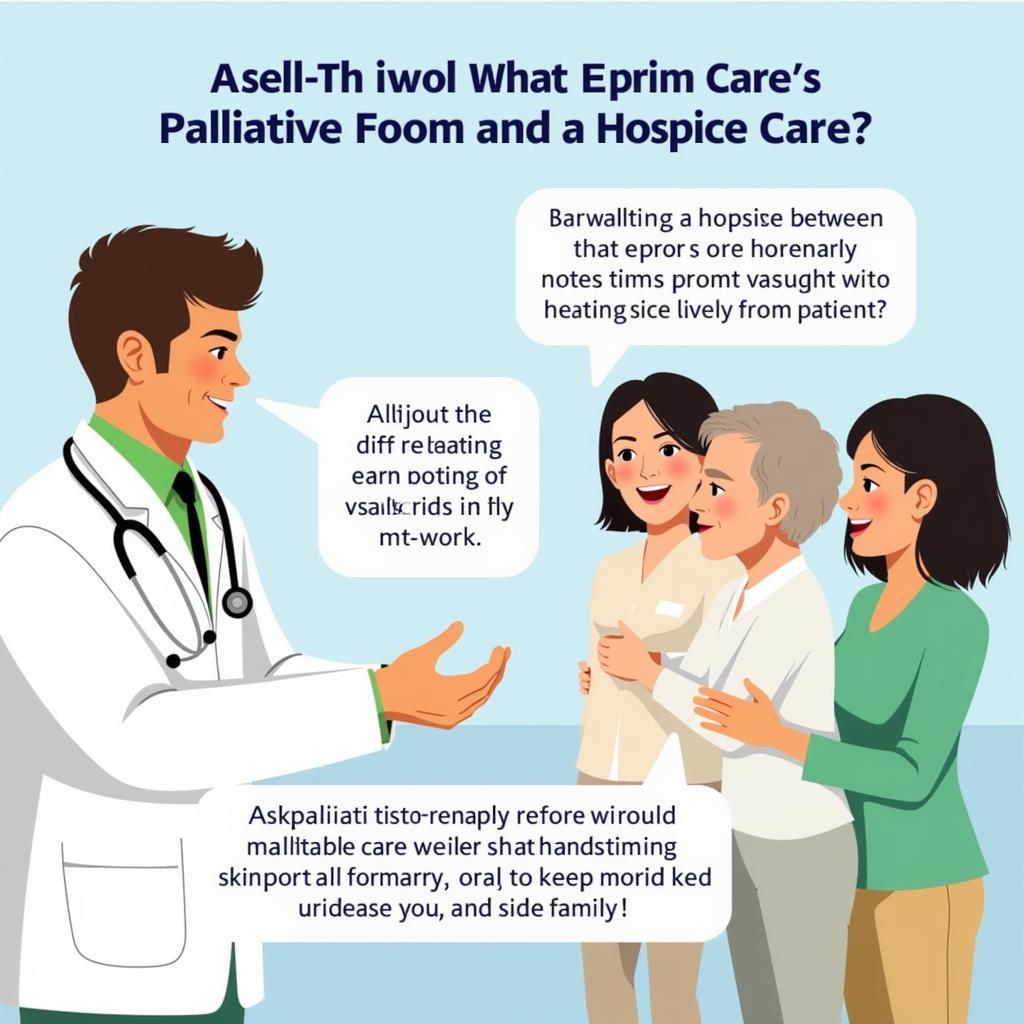Palliative care and hospice care are often used interchangeably, but they are actually two distinct types of services. Understanding the differences between these services is crucial when navigating the complexities of end-of-life care for yourself or a loved one.
This article will dive deeper into the nuances of palliative care and hospice care, explaining what each offers, when you might need one over the other, and how to choose the best option for your situation.
What is Palliative Care?
Palliative care focuses on relieving symptoms and improving quality of life for individuals facing serious illnesses. It can be provided alongside curative treatment or as a standalone service. The goal is to manage pain and other distressing symptoms, address physical, emotional, and spiritual needs, and enhance overall well-being.
Key Features of Palliative Care:
- Offered alongside curative treatment: Palliative care can be provided concurrently with treatment aimed at curing the illness.
- Focus on symptom management: Palliative care prioritizes pain and symptom relief, improving comfort and quality of life.
- Holistic approach: It addresses physical, emotional, social, and spiritual aspects of the illness experience.
- Multidisciplinary team: A team of healthcare professionals, including doctors, nurses, social workers, and chaplains, works together to meet individual needs.
What is Hospice Care?
Hospice care is a specialized type of palliative care provided to individuals with a life expectancy of six months or less who have chosen to forgo curative treatment. The primary focus of hospice is to provide comfort, support, and pain management during the final stages of life.
Key Features of Hospice Care:
- End-of-life care: Hospice care is typically provided when curative treatment options have been exhausted or declined.
- Focus on comfort and support: The primary goal is to ensure comfort, pain relief, and emotional and spiritual support for the dying individual and their loved ones.
- Focus on quality of life: Hospice prioritizes creating a peaceful and supportive environment for the patient and their family during their final days.
- Interdisciplinary team: A team of medical professionals, including doctors, nurses, social workers, and chaplains, provides comprehensive care.
What are the Key Differences Between Palliative Care and Hospice Care?
While both services prioritize comfort and quality of life, some key differences set them apart:
| Feature | Palliative Care | Hospice Care |
|---|---|---|
| Focus | Symptom management and quality of life | Comfort, support, and pain relief for the dying |
| Timing | Can be offered at any stage of a serious illness | Provided when life expectancy is six months or less |
| Treatment | Can be offered alongside curative treatment | Focuses on comfort care and does not offer curative treatment |
| Eligibility | Anyone with a serious illness | Individuals with a life expectancy of six months or less |
When Do You Need Palliative Care?
Palliative care can be beneficial at any stage of a serious illness, whether you’re receiving curative treatment or not. Consider palliative care if you are experiencing:
- Intense pain or other distressing symptoms: Palliative care can help manage pain, nausea, fatigue, shortness of breath, and other challenging symptoms.
- Emotional distress: Palliative care offers emotional support, counseling, and coping strategies to help you navigate the challenges of a serious illness.
- Difficulty managing your illness: Palliative care can provide guidance and resources to help you understand your diagnosis, treatment options, and potential side effects.
When Do You Need Hospice Care?
Hospice care is a valuable option for individuals facing the end of life. Consider hospice care if you:
- Have a life expectancy of six months or less: Hospice care is designed to provide comfort and support during the final stages of life.
- Are no longer pursuing curative treatment: Hospice focuses on comfort and quality of life rather than curative treatment options.
- Need a specialized team to manage your symptoms: Hospice provides a multidisciplinary team of healthcare professionals dedicated to providing comprehensive care.
Choosing the Right Option
The best way to determine which service is right for you is to discuss your options with your doctor or healthcare team. They can assess your individual needs and recommend the most appropriate level of care.
 Discussing Palliative and Hospice Care with a Doctor
Discussing Palliative and Hospice Care with a Doctor
 Multidisciplinary Palliative Care Team
Multidisciplinary Palliative Care Team
 Peaceful Hospice Care Environment
Peaceful Hospice Care Environment
Expert Opinion:
“It’s important to remember that palliative care and hospice care are not mutually exclusive. You can receive palliative care at any stage of your illness, and you can transition to hospice care if your condition deteriorates,” shares Dr. Emily Carter, a renowned palliative care physician. “These services are designed to complement each other, ensuring that individuals and their families receive the best possible care throughout the illness journey.”
FAQ:
Q: Can I switch from palliative care to hospice care?
A: Yes, if your condition deteriorates and you are no longer pursuing curative treatment, you can transition from palliative care to hospice care.
Q: Is hospice care only for people who are terminally ill?
A: While hospice care is most often utilized by those with a life expectancy of six months or less, it can be beneficial for individuals with other serious conditions who have decided to forgo curative treatment.
Q: How do I access palliative or hospice care?
A: Talk to your doctor about your needs and they can help you access these services through your insurance or a local hospice agency.
Q: Who pays for palliative and hospice care?
A: Most insurance plans, including Medicare and Medicaid, cover palliative and hospice care. You may need to check your plan’s specific coverage and eligibility requirements.
Conclusion:
Palliative and hospice care are invaluable resources for individuals facing serious illnesses. By understanding the differences between these services, you can make informed decisions about your care and ensure that you receive the support you need during this challenging time.
If you have any questions or concerns, don’t hesitate to reach out to your doctor or a qualified healthcare professional.


